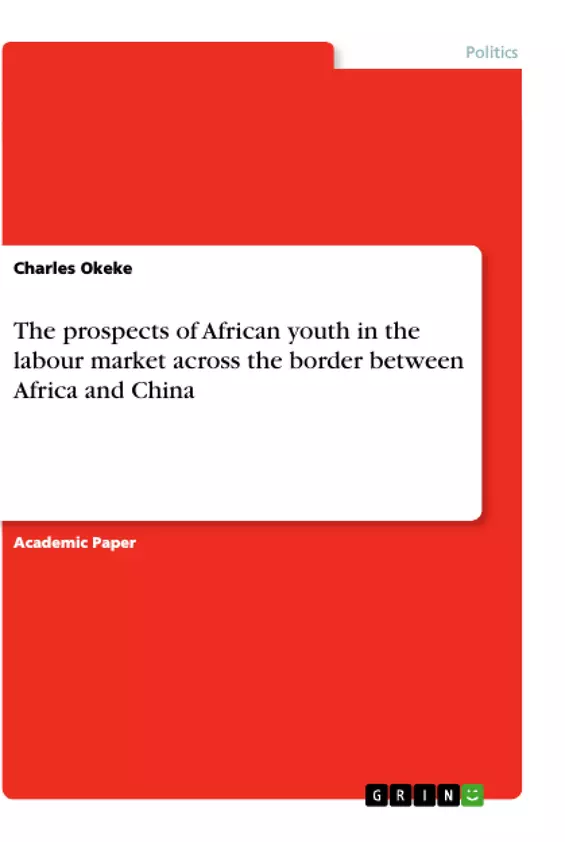This paper seeks to explore the conundrum of the African youth in the labour market as the number of young people continues to grow with a few job openings available for them. There is no unique determinant of the youth employment challenge in the African region. Rather, a combination of factors contributes to compound a situation that has become a top socio-political priority for the region.
Africa has the youngest population in the world and over 10 years from now, 30 million young people from the region are likely to enter the African labour market each year.
The African population is very young and therefore, one could say that the employment challenge is, in effect, also a youth challenge. Young people are between 1.5 and 2.5 times more likely to be out of work than older adults in most of the countries in the continent.
Africa’s unemployment conundrum is such that those in vulnerable employment and those underemployed in informal sectors are not always in the calculation when assessing the dangers of lack of jobs for young people. Youth find work but most often than not, in places where the pay is very low with lack of opportunity for skills development and job security.
This is so, partly because most African countries have not been able to transform fundamentally from low productivity agriculture to higher productivity on-agriculture sectors and when coupled with high fertility and low infant mortality, the result has shown little improvement in the building of sustainable employment structure.
Over the past few years, researches have been carried out on several dimensions of China’s education, training and labour relations with Africa. In spite of China’s discourse about the parity and importance of win-win in China–Africa engagement, many still think that China has not paid sufficient attention to the issue of job creation for the young people in Africa, considering the number of investments the country has in the continent.
Many Chinese companies operating in Africa have a negative assessment card. Beyond the claim of asymmetric relations and debt-trap diplomacy, when it comes to their employment record, some observers accuse the Chinese of mainly employing their citizens for projects in Africa, depriving the locals of potential jobs. When they do hire locally, the accusation is that the wages are very low and come with little or no training.
Inhaltsverzeichnis (Table of Contents)
- Introduction
- Why is youth unemployment an important topic for Africa?
- Youth employment trends
- Obstacles to better jobs for African youth
- Youth in Africa and employment opportunities created by Sino-Africa Relations
Zielsetzung und Themenschwerpunkte (Objectives and Key Themes)
This paper analyzes the challenges facing African youth in the labor market, particularly in the context of China's growing presence in Africa. It examines the factors contributing to the high rates of youth unemployment in Africa and the role of Chinese companies in job creation and skill development.
- Youth unemployment in Africa
- The impact of China's economic engagement on African labor markets
- The challenges of creating sustainable employment opportunities for African youth
- The role of government and private sector in addressing youth unemployment
- The potential for Sino-Africa cooperation to address youth unemployment
Zusammenfassung der Kapitel (Chapter Summaries)
- Introduction: This chapter establishes the context of the paper by discussing the definition of youth and the demographic trends in Africa, highlighting the continent's young population and the challenges it faces in providing employment opportunities.
- Why is youth unemployment an important topic for Africa?: This chapter examines the social and economic implications of youth unemployment in Africa, emphasizing the need for urgent action to address this issue. It also explores the challenges faced by young people in finding employment, including limited access to education and training, lack of skills development, and the prevalence of informal sector jobs.
- Youth employment trends: This chapter analyzes the current trends in youth employment in Africa, comparing the region to other parts of the world and discussing the challenges in obtaining accurate data on employment rates. It explores the role of international organizations in supporting youth employment initiatives.
- Obstacles to better jobs for African youth: This chapter examines the factors hindering job creation for African youth, including inadequate infrastructure, lack of good leadership, limited access to credit, and the reluctance of employers to hire young people due to perceived lack of experience and skills. It discusses the need for government and private sector interventions to address these challenges.
- Youth in Africa and employment opportunities created by Sino-Africa Relations: This chapter examines the potential for Sino-Africa relations to contribute to job creation and skill development for African youth. It discusses the role of Chinese companies in infrastructure and public construction projects and the extent to which they employ local labor. It also explores the debate surrounding the impact of Chinese companies on African labor markets.
Schlüsselwörter (Keywords)
This paper focuses on the intersection of youth unemployment, African development, and China's growing economic presence in Africa. It explores the challenges of creating sustainable employment opportunities for young people in the continent, the role of Chinese companies in job creation, and the potential for Sino-Africa cooperation in addressing this critical issue. Key terms include: African youth, employment, unemployment, labor market, China-Africa relations, job creation, skill development, infrastructure, and economic development.
- Arbeit zitieren
- Charles Okeke (Autor:in), 2019, The prospects of African youth in the labour market across the border between Africa and China, München, GRIN Verlag, https://www.grin.com/document/502571



